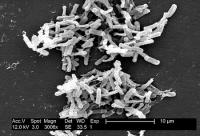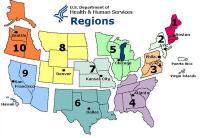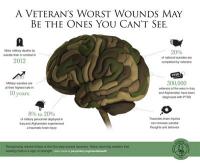-
How dangerous people get their guns
The San Bernardino massacre is unique in several respects, but it does bring into focus an important issue with broad relevance: how do dangerous people obtain guns, and what should the police and courts be doing to make those transactions more difficult? Criminal assaults with guns kill thirty Americans every day, and injure another 170. The guns carried and misused by youths, gang members, and active criminals are more likely than not obtained by transactions that violate federal or state law. Unlike in the case of Enrique Marquez, a friend and neighbor of the terrorist couple who purchased two military-style rifles for them, it is rare for the people who provide these guns to the eventual shooters to face any legal consequences. Currently it is rare for those who provide guns to offenders to face any legal consequences, and changing that situation will require additional resources directed to a proactive enforcement directed at penetrating the social networks of gun offenders.
-
-
Protecting drinking water
We place high demands on the quality of our drinking water. If pathogens or toxic substances found their way into the piping system, many people could become infected or injured very quickly. This is why this risk must be kept low. To do this, experts have developed technologies for a comprehensive monitoring, early warning and emergency management system.
-
-
Manmade mercury emissions decline 30 percent between 1990 and 2010

Mercury is a metallic element that poses environmental health risks to both wildlife and humans when converted to methylmercury in ecosystems. It can be converted into gaseous emissions during various industrial activities, as well as natural processes like volcanic eruptions. Between 1990 and 2010, global mercury emissions from manmade sources declined 30 percent. New research finds.
-
-
New test for infectious disease promises quick diagnosis

Researchers have come up with a way for inventing molecule probes quickly to identify deadly bacterial strains of infectious disease. The test can be done in less than an hour, compared to the current forty-eight hours, allowing for rapid, more accurate treatment of patients.
-
-
Suicide bomber kills 15 outside polio clinic in Quetta, Pakistan
The Taliban’s violent campaign against bringing Western medicine to children in Pakistan, a campaign which focused primarily on disrupting the efforts of the Pakistani government and international NGOs to fight polio, continues. Earlier today (Wednesday), a suicide bomber has killed at least fifteen people, most of them police, outside a polio eradication center in the city of Quetta in western Pakistan.
-
-
Cheat-proof smartphone knows when you are faking activity

Health care providers and insurance companies are increasingly relying on smartphone and wearable activity trackers to reward active individuals for healthy behavior or to monitor patients. But because activity trackers can be easily deceived, researchers have designed a way to train smartphone trackers to spot the difference between fake and real activity.
-
-
Sharing of research data, findings should be the norm in public health emergencies

Opting in to data sharing should be the default practice during public health emergencies, such as the recent Ebola epidemic, and barriers to sharing data and findings should be removed to ensure those responding to the emergency have the best available evidence at hand, experts say.
-
-
Toxins found in fracking fluids and wastewater: Study

In an analysis of more than 1,000 chemicals in fluids used in and created by hydraulic fracturing (fracking), researchers found that many of the substances have been linked to reproductive and developmental health problems, and the majority had undetermined toxicity due to insufficient information. The researchers say that further exposure and epidemiological studies are urgently needed to evaluate potential threats to human health from chemicals found in fracking fluids and wastewater created by fracking.
-
-
Gov. Brown declares emergency in wake of massive L.A. natural gas leak
California governor Jerry Brown on Wednesday declared an emergency in a Los Angeles neighborhood where a natural gas well has been spewing record amounts of stinking, global-warming methane gas. Energy experts said the breach at the natural gas storage reservoir, and the subsequent, ongoing release, are the largest known occurrence of its kind.
-
-
Identifying areas of plague risk in Western U.S.

Plague was first introduced into the United States in 1900, by rat–infested steamships which had sailed from affected areas. Epidemics occurred in port cities, with the last urban plague epidemic in the United States occurring in Los Angeles from 1924 through 1925. Researchers have identified and mapped areas of high probability of plague bacteria in the western United States. The findings may be used by public health agencies to aid in plague surveillance.
-
-
Study links insurgency phase of Iraq War to higher PTSD rates

Guerilla tactics such as suicide attacks and roadside bombs may trigger more posttraumatic stress than conventional warfare, suggests a Veterans Affairs study of 738 men and women who served in Iraq. The study found that among the men — about half the overall group — the insurgency-phase veterans were more than twice as likely to have a diagnosis of PTSD, compared with those who served in either of the other two phases.
-
-
Making mobile health more secure

With Internet-connected medical technology and digitized health records on the rise, cybersecurity is a growing concern for patients and hospitals alike. For example, a patient’s insulin pump may accept dosage instructions from unauthorized smartphones that have been infected with malicious software, or a patient’s fertility-tracking app could expose itself to nearby strangers by probing for a Bluetooth device to connect with. One research team is taking a holistic approach to strengthening the medical system’s security — from the computer networks that support hospitals, to the cloud, to the smart phone in your pocket.
-
-
Studying gun violence is the only way to figure out how to stop it – but we don’t
There are about 32,000 gun deaths a year in the United States. There are another 180,000 or so people injured by firearms annually in the country. These numbers far outstrip the consequences of firearms among our peer high-income countries, with stricter gun regulations. One factor that has inhibited the discussions in the public space over gun violence is the relatively limited data we have available about firearms and firearm violence. Gun violence is a public health problem, but it is not studied the same way other public health problems are. The reason: In 1996 the NRA pushed Congress to prohibit the use of funds made available for injury prevention and control at the Centers for Disease Control and Prevention to be used to advocate or promote gun control. The CDC broadly interpreted this as a bar on firearms research, with other federal funders following suit. This has had a chilling effect on gun research. Because of the bar on research, our understanding of the real consequences of the firearm epidemic is surface deep. The United States has had enormous success in responding to other challenges to public health, including, for example, motor vehicle safety, through gathering data that understands the challenge and implementing structural changes to mitigate the potential harm. On the issue of firearm violence, we are not even at the first step.
-
-
FDA clears military traumatic wound dressing for use in civilian population
Early control of severe bleeding may prevent shock and may be life-saving., as 30 to 40 percent of civilian deaths by traumatic injury are the result of hemorrhaging. Of those deaths, 33 to 56 percent occur before the patient reaches a hospital. Last week the FDA cleared the use of the XSTAT 30 wound dressing, an expandable, multi-sponge dressing used to control severe, life-threatening bleeding from wounds in areas that a tourniquet cannot be placed (such as the groin or armpit) in battlefield and civilian trauma settings.
-
-
Flu season likely to peak in February
According to the CDC, seasonal influenza affects up to 20 percent of people in the United States and causes major economic impacts resulting from hospitalization and absenteeism. The flu season will likely peak in February in most parts of the United States, according to a model developed by scientists at Los Alamos National Laboratory. Using historical data, a mathematical representation of how flu spreads through a population, and data for the current flu season provided by the Centers for Disease Control and Prevention (CDC), the scientists were able to create a probabilistic model forecasting the flu season.
-
More headlines
The long view
A Shining Star in a Contentious Legacy: Could Marty Makary Be the Saving Grace of a Divisive Presidency?
While much of the Trump administration has sparked controversy, the FDA’s consumer-first reforms may be remembered as its brightest legacy. From AI-driven drug reviews to bans on artificial dyes, the FDA’s agenda resonates with the public in ways few Trump-era policies have.
